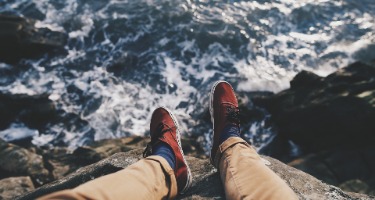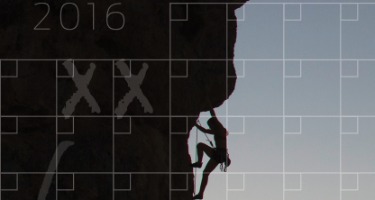The rise in employer-sponsored wellness programs has been accompanied by an even steeper rise in government regulation. This means that maintaining a compliant wellness program is more complicated than ever.
As explained below, wellness programs come in countless forms, and each design requires its own unique legal analysis.
Employers interested in implementing an employee wellness program (or adjusting their current design) should familiarize themselves with the three key wellness laws: the Department of Labor’s wellness program regulations under HIPAA, the EEOC’s wellness program regulations under the ADA, and the Internal Revenue Code’s taxation of employer-paid benefits.
Numerous other federal laws apply, but these three laws provide the foundation for most employer-sponsored wellness program approaches.
Overview
Wellness programs come in innumerable different shapes and sizes, but their end goals are often the same: reducing health plan expenditures by encouraging and incentivizing healthy behavior among employees. Common designs include:
- Educational programs;
- Weight loss challenges;
- Competitions using step-tracking wearables;
- Tobacco cessation programs;
- Gym membership reimbursements;
- Onsite flu shots;
- Disease management programs;
- Health risk questionnaires; and
- Biometric screenings.
Some employers choose to make these programs completely voluntary with no reward or penalty associated with participation. Others use incentives to drive higher participant involvement—and, hopefully, deeper reductions in health care expenses. These wellness incentives range from small prizes all the way to steep reductions in medical insurance premiums. In some cases, employers may demand more than just mere participation. The most aggressive forms of wellness programs will require participants to reach certain health-related benchmarks to earn the reward. An example of this would be a wellness program that requires participants to achieve a certain cholesterol level in order to receive reduced medical plan premiums.
Confusingly, not all wellness programs are subject to the same laws. Minor changes in design can effect which laws impact the program. We have summarized three of the key federal laws that govern wellness programs below. In most cases, at least one of these laws will impact how the program is designed and administered.
DOL Regulation
The DOL regulates wellness programs through HIPAA, a federal law that (among other things) prevents employer-sponsored group health plans from discriminating against employees based on their health. For example, this means that an employer can’t charge higher premiums to sick employees. However, as discussed above, some wellness programs require participants to meet health-related standards to earn reduced medical plan premiums, which could be viewed as a form of discrimination.
In response, DOL adopted regulations under HIPAA that permit group health plans to use medical plan premium discounts as a wellness program reward, but only under limited conditions. For example, the reward associated with the program cannot exceed a certain threshold, which varies depending on whether the program includes a tobacco cessation element. Additionally, participants in some programs must be offered the opportunity to request a “reasonable alternative” to the wellness program if they are unable to satisfy the program’s standards.
Importantly, these rules impact “group health plans” only. A wellness program can become linked to a group health plan if the reward is a reduction in medical plan premiums. In some cases, the wellness program itself can be a group health plan if it provides medical benefits (e.g., through a flu shot program or mental health counseling session).
EEOC Wellness Program Rules
The Americans with Disabilities Act (ADA) also places limits on employer-sponsored wellness programs. Specifically, the ADA prohibits employers from requiring employees to submit to physical examinations or answer disability-required questions. The ADA includes a narrow carve-out for “voluntary wellness programs,” but fails to provide a concrete definition of what constitutes a “voluntary” program. After years of litigation and speculation, the EEOC issued regulations under the ADA in 2016 that established legal guidelines for establishing a voluntary wellness program.
Like the DOL, the EEOC imposes a cap on the reward for completing an examination-related wellness program. The EEOC reasoned that if a reward or penalty was too high, the program would no longer be truly “voluntary” for the employee. The ADA also places additional rules on wellness programs, including important notice and privacy requirements.
The EEOC wellness regulations have been met with criticism from employers sponsoring such wellness programs, as well as certain advocacy groups concerned that these programs invade employee privacy. In a recent case reviewing the EEOC’s regulatory process, one court ordered the EEOC to review and revise their regulations. In response, the EEOC stated that these regulations will be under review in 2018.
IRS Regulations
Lastly, many employers operate under the mistaken belief that all wellness program rewards are automatically considered non-taxable to the employee. In some cases, rewards associated with group health plans may be exempt from employee income under Code Section 105. Additionally, if the reward constitutes a valid medical expense under Code Section 213(d), the employee may not be required to pay tax on the value of the reward. However, many popular wellness program giveaways, such as digital scales and pedometers, do not qualify for favorable tax treatment because they do not qualify for exclusion under the code. That means that full value of these non-excluded prizes must be imputed as income to the employee on his/her Form W-2.
Putting it all Together
As noted above, not all programs are subject to the same set of laws. For example, if an employer offers a cash reward for taking a biometric screening, the program will be required to comply with the ADA’s rules for voluntary wellness programs. Additionally, because the reward is paid in cash, the amount must be included in the employee’s taxable income. However, since the program does not involve a group health plan, HIPAA’s wellness program regulations would not apply.
To further complicate matters, minor adjustments to the program will drastically change the regulatory framework. For example, if the employer in the previous example decides to switch the reward from a cash payout to a medical premium subsidy, the DOL rules would be triggered because the program affects the group health plan. Meanwhile, the reward would be taxed differently because it’s paid in the form of a premium rather than cash.
The key takeaway for employers is to remember that wellness programs may seem simple on their face, but they come with complex compliance hurdles that must be reviewed before the program can be implemented. This article provides a summary of just three key federal rules governing wellness programs, and there are many other laws that impact wellness program administration. Legal review of these programs is imperative; otherwise, an employer could face enforcement actions from no less than three federal agencies at once.



























